- The stock has made lower highs and lower lows since 2018
- VLO faces increased regulations
- Reason one- The pandemic will end, and people will venture out in their cars
- Reason two- Crack spreads are leaning higher
- Reason three- The dividend pays handsomely while waiting for capital appreciation
With the stock market not far from an all-time high, bargains are not easy to locate. Identifying companies that offer earnings power with low share prices is more than a challenge. When it comes to the energy sector, it requires a leap of faith.
While the trend towards electric vehicles will continue to capture market share from gasoline-powered cars, most cars on the road still require the hydrocarbon for fuel. A sudden return of demand in 2021 is likely as vaccines create herd immunity to the coronavirus.
After being cooped up at home and social distancing to avoid infection, many people are waiting for the time they can get back in cars and travel to work, in planes and go on business trips and vacations, and return to a normal life. Gasoline demand is bound to rise as the threat of the virus declines over the coming months.
Valero Energy Corporation (VLO) processes crude oil into gasoline. While the new administration in Washington DC will move towards alternative and renewable energy sources, gasoline will remain the primary fuel for the coming years. VLO had a tough year in 2020, but the shares are at a level where is substantial rebound could be on the horizon. Meanwhile, the company pays its shareholders an attractive dividend while they wait for capital appreciation.
The stock has made lower highs and lower lows since 2018
VLO traded to an all-time high of $126.98 per share in June 2018. The refining company hit its high at a time when seasonal factors during the driving season during the spring and summer months typically provide underlying strength for refining companies.
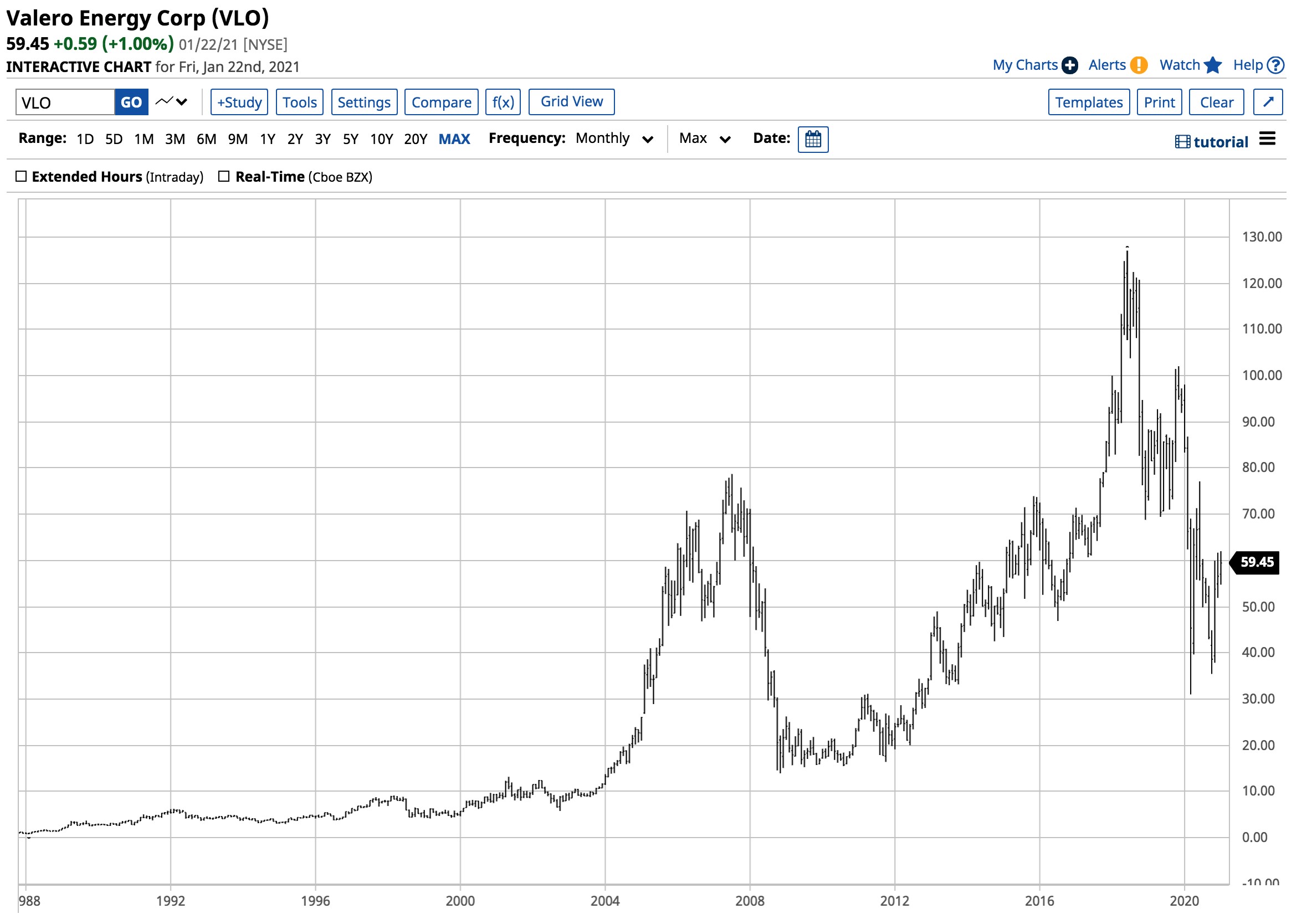
Source: Barchart
As the long-term chart highlights, since the mid-2018 peak, VLO fell to a low of $31 in March 20202 during the risk-off period caused by the global pandemic. At $59.45 per share at the end of last week, VLO recovered from the low but is still far below the record high and the low one-year ago in January 2020 at $83.32.
2020 was a year like no other. While the stock was under pressure at this time in 2020, it is trending higher during the first month of 2021.
VLO faces increased regulations
Last week, the US government transitioned from the Trump to the Biden administration. President Biden will have the support of majorities in the House of Representatives and the Senate for his policy initiatives. Climate change and alternative energy is a cornerstone of the new administration.
Increased regulations for extracting hydrocarbons from the earth’s crust are likely to cause production to decline as the US turns to alternative energy sources for power over the coming years. However, gasoline and other oil products remain significant energy sources for the coming years. While the petroleum refining business faces more regulations, demand for oil products is likely to increase in 2021 for at least three reasons.
Reason one- The pandemic will end, and people will venture out in their cars
As of the end of last week, over 420,000 people in the US lost their lives to COVID-19. Worldwide, over two million have perished. We are still in the early days of the global vaccination program that will create herd immunity to the virus, which continues to take a substantial toll on people’s lives and livelihoods.
Optimism is rising that herd immunity will bring an end to the worst health crisis in over a century. As people begin to move outside of homes, travel to work, vacation, and social distancing guidelines decline, energy demand will rise.
The 2020 driving season in the US was a disaster for refiners and sets the bar low for the upcoming 2021 peak season of demand. The end of the pandemic or even a slow return to pre-coronavirus demand levels could cause a spike in prices in an environment where increasing regulations are likely to slow US fossil fuel output.
The end of the pandemic in 2021 and a stricter regulatory environment could support oil product demand, refinery earnings, and VLO shares. Higher refining margins would likely offset increased regulatory expenses.
Reason two- Crack spreads are leaning higher
Gasoline and distillate processing spreads have been trending higher over the past months, which continues to support VLO’s earnings and share price for the coming months.
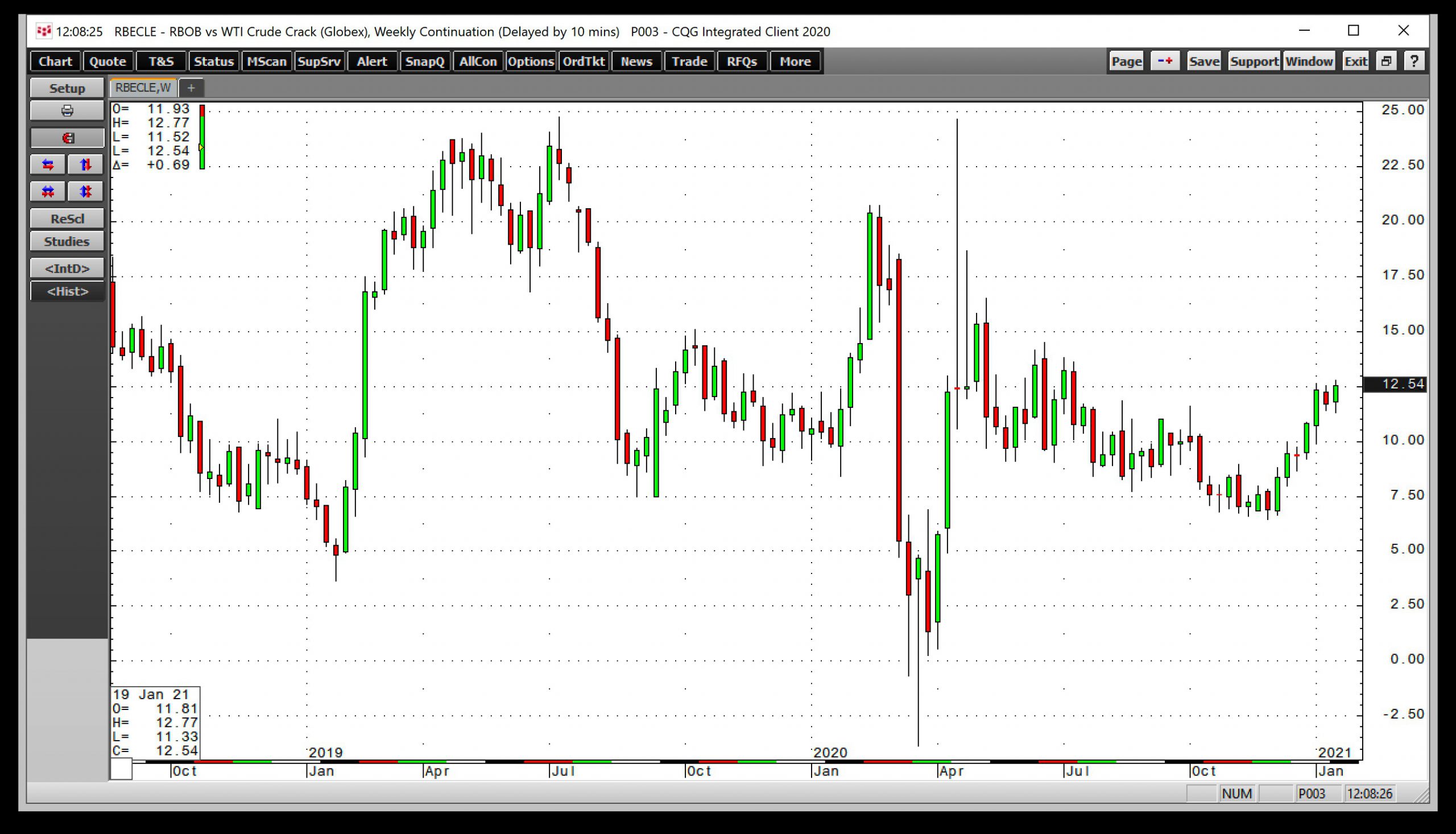 Source: CQG
Source: CQG
After trending lower from April through late 2020, the gasoline crack spread has turned higher during the heart of the 2020/2021 offseason for demand. At the $12.54 level at the end of last week, the gasoline crack spread was trading at a higher level than at the same time in 2020. The recent trend in the gasoline refining spread has been higher.
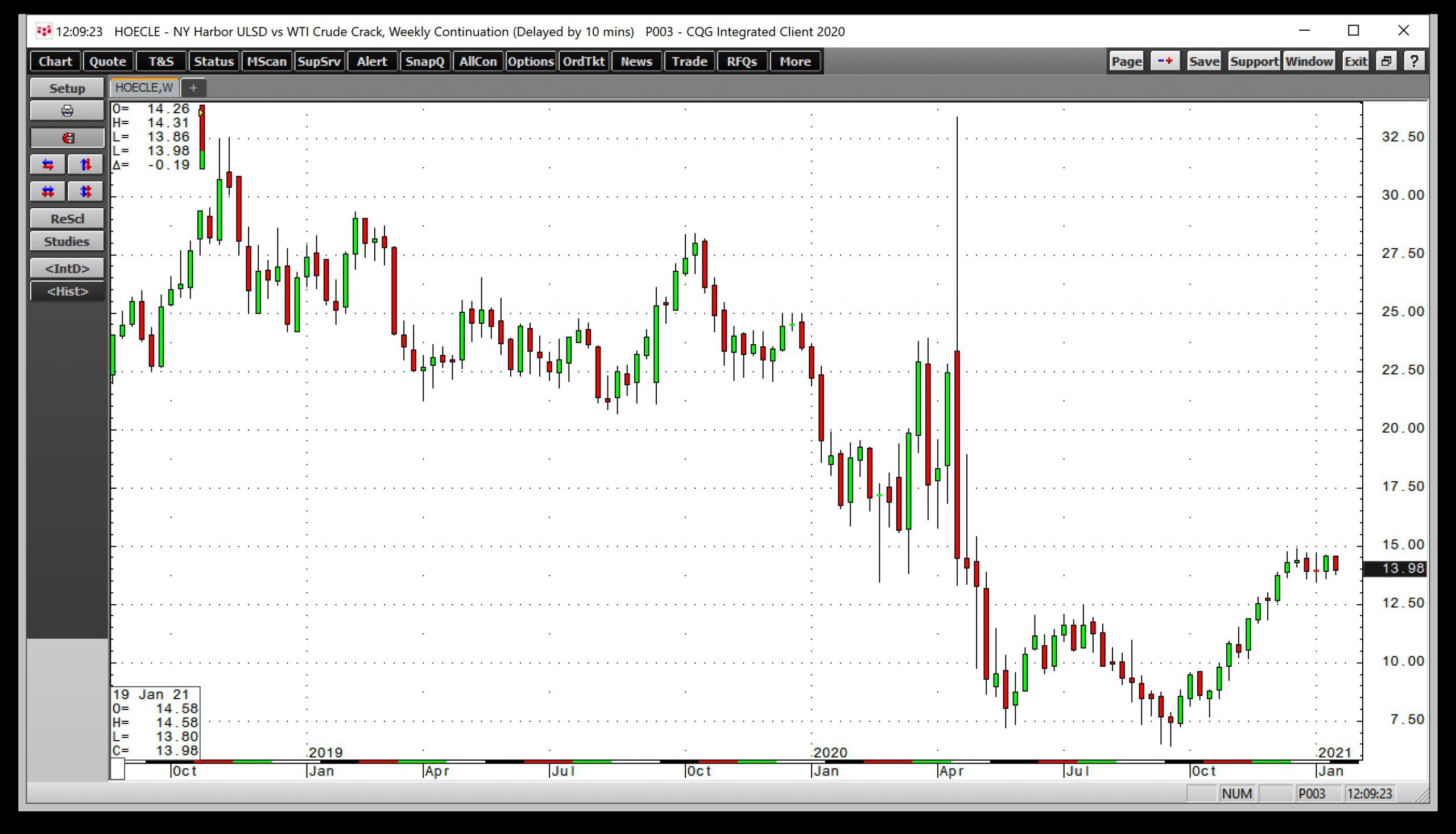 Source: CQG
Source: CQG
Heating oil futures are a proxy for other distillate products, so its crack spread reflects the refining margin for now only the heating oil but for diesel, jet, and other distillates. At $13.98 late last week, the crack spread has been trending higher since late September. However, the heating oil crack remains well below the low from the same time in 2020 at over $18 per barrel.
The recent trends in the processing spreads support higher earnings and a rising share price for VLO.
Reason three- The dividend pays handsomely while waiting for capital appreciation
At the $60 level, Valero pays its shareholders $3.92 or a 6.6% dividend. The stock trades an average of nearly five million shares each day. VLO reported losses in Q2 and Q3, but the stock still managed to beat consensus forecasts in a trend that has been in place for at least the past four consecutive quarters.
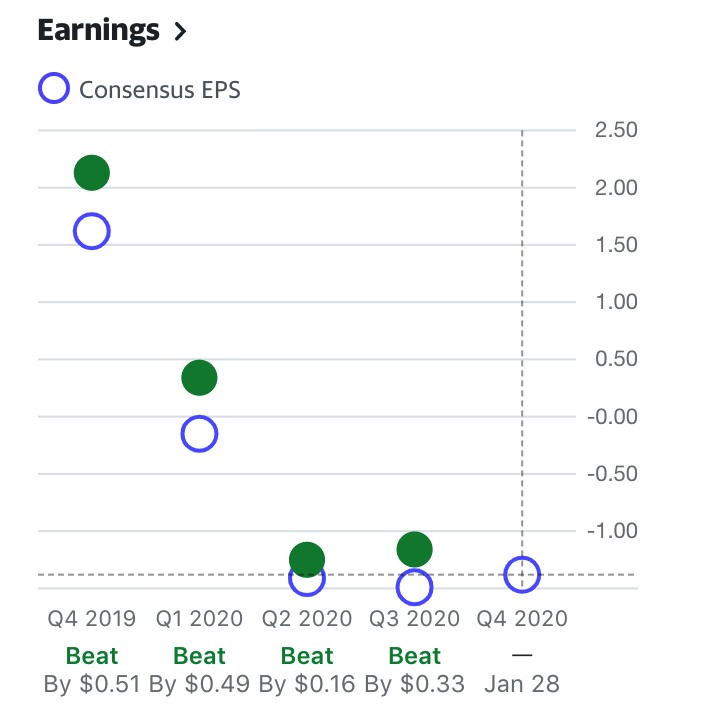 Source: Yahoo Finance
Source: Yahoo Finance
As the chart shows, after losing $1.25 and $1.16 per share in Q2 and Q3, the current estimate is for another loss of $1.42 in Q4 2020. During the same period in 2019, VLO reported EPS of $2.13. VLO will announce Q4 earnings on January 28.
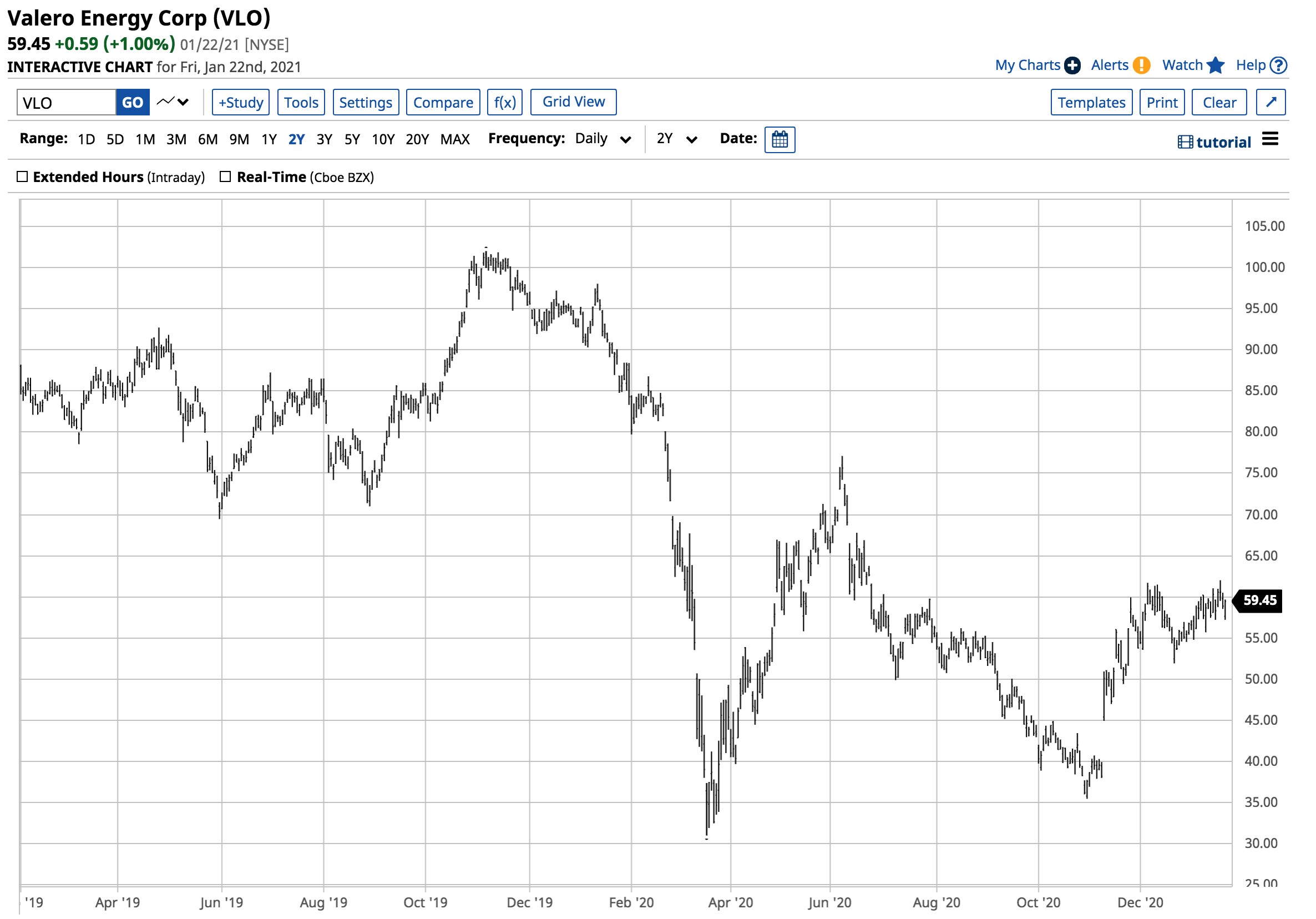 Source: Barchart
Source: Barchart
The chart shows that the first upside target for VLO stands at the June 2020 peak of $77.11 per share. Above there, technical resistance is at the mid-January 2020 $98.03 high and the November 2019 $101.99 peak.
At just below $60, VLO has plenty of room to recover if energy demand makes a comeback over the coming months. The 6.6% dividend provides a cushion for investors and traders looking for the refining business to make a comeback in the post-pandemic world.
Want More Great Investing Ideas?
9 “MUST OWN” Growth Stocks for 2021
How to Outperform the Stock Market?
7 Best ETFs for the NEXT Bull Market
5 WINNING Stocks Chart Patterns
VLO shares were trading at $58.11 per share on Monday morning, down $1.34 (-2.25%). Year-to-date, VLO has gained 2.72%, versus a 2.73% rise in the benchmark S&P 500 index during the same period.
About the Author: Andrew Hecht

Andy spent nearly 35 years on Wall Street and is a sought-after commodity and futures trader, an options expert and analyst. In addition to working with StockNews, he is a top ranked author on Seeking Alpha. Learn more about Andy’s background, along with links to his most recent articles.
The post Three Reasons Why Now Is the Time to Consider Valero appeared first on StockNews.com